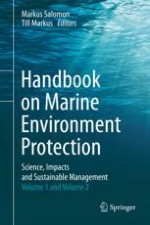2018 | OriginalPaper | Buchkapitel
27. Factors Behind Increasing Ocean Use: The IPAT Equation and the Marine Environment
verfasst von : Troels J. Hegland
Erschienen in: Handbook on Marine Environment Protection
Aktivieren Sie unsere intelligente Suche, um passende Fachinhalte oder Patente zu finden.
Wählen Sie Textabschnitte aus um mit Künstlicher Intelligenz passenden Patente zu finden. powered by
Markieren Sie Textabschnitte, um KI-gestützt weitere passende Inhalte zu finden. powered by
